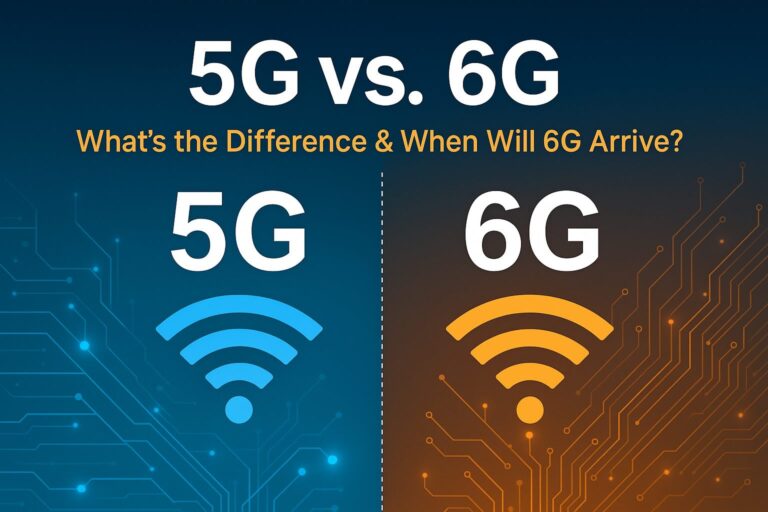Blockchain technology and cryptocurrencies have become synonymous with digital innovation, decentralization, and financial revolution. This article delves into the fundamentals of blockchain technology, explains how cryptocurrencies work, and explores their impact on various sectors.
What is Blockchain Technology?
Blockchain is a decentralized digital ledger that records transactions across a network of computers in a way that ensures the data is secure, transparent, and immutable. Each transaction is stored in a “block,” and these blocks are linked together in chronological order, forming a “chain.”
1. Key Characteristics of Blockchain:
- Decentralization: Unlike traditional databases managed by a central authority, a blockchain is maintained by a distributed network of nodes (computers). Each node has a copy of the entire blockchain, ensuring redundancy and reducing the risk of centralized failure.
- Transparency: Transactions recorded on a blockchain are visible to all participants in the network. This transparency fosters trust and accountability.
- Immutability: Once a transaction is recorded on the blockchain, it cannot be altered or deleted. This immutability ensures the integrity and reliability of the data.
- Security: Blockchain uses cryptographic techniques to secure data. Each block contains a cryptographic hash of the previous block, a timestamp, and transaction data. This structure makes it extremely difficult for malicious actors to tamper with the data.
2. How Blockchain Works:
- Transaction Initiation: A user initiates a transaction, such as sending cryptocurrency to another user.
- Verification: The transaction is broadcast to the network and validated by nodes using consensus algorithms, such as Proof of Work (PoW) or Proof of Stake (PoS).
- Block Formation: Once verified, the transaction is grouped with other transactions to form a new block.
- Block Addition: The new block is added to the existing blockchain, making the transaction permanent and immutable.
- Confirmation: The transaction is confirmed, and the updated blockchain is distributed across the network.
What are Cryptocurrencies?
Cryptocurrencies are digital or virtual currencies that use cryptography for security and operate on blockchain technology. The most well-known cryptocurrency is Bitcoin, but there are thousands of others, including Ethereum, Ripple, and Litecoin.
1. Key Characteristics of Cryptocurrencies:
- Decentralization: Cryptocurrencies are typically decentralized and not controlled by any central authority, such as a government or financial institution.
- Anonymity: Users can transact with cryptocurrencies without revealing their identities, offering a degree of privacy.
- Security: Cryptocurrencies use cryptographic techniques to secure transactions and control the creation of new units.
- Global Access: Cryptocurrencies can be sent and received anywhere in the world, making them accessible to anyone with an internet connection.
2. How Cryptocurrencies Work:
- Creation: New units of cryptocurrency are created through a process called mining (in PoW systems) or staking (in PoS systems). Miners or validators solve complex cryptographic puzzles to validate transactions and add them to the blockchain, earning new cryptocurrency units as a reward.
- Wallets: Users store their cryptocurrencies in digital wallets, which can be software-based (hot wallets) or hardware-based (cold wallets). Wallets have public and private keys that allow users to send and receive cryptocurrencies securely.
- Transactions: To send cryptocurrency, a user initiates a transaction using their private key. The transaction is broadcast to the network, where it is verified and added to the blockchain.
- Exchanges: Users can buy, sell, or trade cryptocurrencies on digital exchanges. These platforms facilitate the exchange of cryptocurrencies for fiat money or other digital assets.
Applications of Blockchain and Cryptocurrencies
1. Finance and Banking
Blockchain and cryptocurrencies are revolutionizing the financial sector by enabling faster, cheaper, and more secure transactions. Key applications include:
- Cross-Border Payments: Cryptocurrencies enable instant cross-border transactions with lower fees compared to traditional banking systems.
- Decentralized Finance (DeFi): DeFi platforms offer financial services such as lending, borrowing, and trading without intermediaries, democratizing access to financial services.
- Digital Identity Verification: Blockchain technology can be used to create secure and tamper-proof digital identities, reducing fraud and streamlining KYC processes.
2. Supply Chain Management
Blockchain enhances supply chain transparency and efficiency by providing a secure and immutable record of every transaction. Key benefits include:
- Provenance Tracking: Companies can trace the origin and journey of products, ensuring authenticity and reducing counterfeiting.
- Efficient Logistics: Real-time tracking and verification of goods reduce delays and improve logistics management.
3. Healthcare
In healthcare, blockchain can improve data security, patient privacy, and interoperability. Key applications include:
- Electronic Health Records (EHRs): Blockchain can provide secure and interoperable EHRs, ensuring that patient data is accurate and accessible across different healthcare providers.
- Clinical Trials: Blockchain can enhance the transparency and integrity of clinical trials by securely recording trial data and preventing tampering.
4. Voting and Governance
Blockchain technology can be used to create secure and transparent voting systems, ensuring the integrity of elections. Key benefits include:
- Tamper-Proof Voting: Blockchain can provide a tamper-proof record of votes, reducing the risk of fraud and ensuring the accuracy of election results.
- Increased Voter Participation: Blockchain-based voting systems can make it easier for people to vote remotely, increasing voter participation.
Challenges and Limitations
Despite their potential, blockchain and cryptocurrencies face several challenges:
1. Scalability
Blockchain networks, especially those using PoW, face scalability issues. As the number of transactions increases, the network can become congested, leading to slower processing times and higher fees.
2. Regulatory Uncertainty
The regulatory environment for cryptocurrencies varies significantly across countries. This uncertainty can hinder the adoption and integration of cryptocurrencies into the mainstream financial system.
3. Security Risks
While blockchain technology is inherently secure, the surrounding infrastructure (such as exchanges and wallets) can be vulnerable to hacking and fraud. High-profile hacks have resulted in significant financial losses.
4. Energy Consumption
PoW-based blockchain networks, such as Bitcoin, consume substantial amounts of energy, raising concerns about their environmental impact. Alternative consensus mechanisms, like PoS, are being developed to address this issue.
5. Adoption and Usability
For blockchain and cryptocurrencies to achieve widespread adoption, they must become more user-friendly and accessible. Complex interfaces and technical jargon can be barriers to entry for the average user.
Conclusion
Blockchain technology and cryptocurrencies represent a paradigm shift in how transactions are conducted, data is secured, and trust is established in digital environments. While challenges remain, the potential benefits of decentralization, transparency, and security are driving continued innovation and adoption across various sectors.
As the technology matures, we can expect to see even more innovative applications and solutions that leverage the unique properties of blockchain and cryptocurrencies, shaping the future of digital interaction and commerce.












